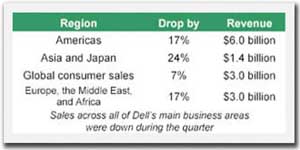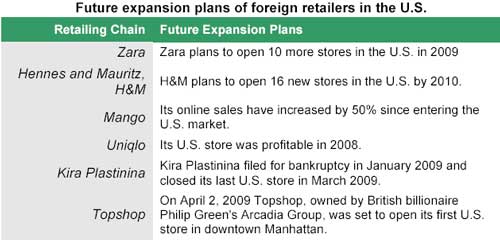Business Strategy – Strategic Marketing
Dell’s Entry in India
Dell International started in India about seven or eight years back by opening a customer contact center at Bangalore in 2001. In 2003, the second contact center was opened at Hyderabad. The company operates its services from four centers based at Bangalore, Hyderabad, Chandigarh and Gurgoan. Dell started in Bangalore providing customer support to English speaking countries and later also began providing technical support, procurement of financial back office and Knowledge process outsourcing. After the U.S., Dell India is the second biggest centre with 13,000 employees. The strategic importance of India to Dell is evident from the fact that India was one among three locations (the other two being US and UK) where Dell’s Latitude E series and Precision notebooks were launched.
Manufacturing – The first Dell ‘Made in India’ desktop
“The Chennai operation reaffirms the strategic importance of India to Dell, providing significant impetus to our growth plans and prospects here, where we are already among the fastest growing computer systems suppliers.“– R Anandan, VP & GM, Dell India
In July 2007, Dell began production at its new manufacturing facility in Chennai (Dell’s third manufacturing location in Asia-Pacific and Japan region and eighth overall). The Sriperumbudur plant (50-acre site with a planned five-year investment of about US$ 30 million) was chosen for manufacturing in September 2006. The planned initial capacity was around 400,000 desktop computers per year. The company has doubled its production capacity since then from 400,000 in 2007 to the 1 million units in June 2008. Infosys, one of Dell’s largest customers in the country, was presented with the first ‘Made in India’ desktop computer system.
Dell’s Market Share in India
“India is the fastest growing market for Dell worldwide and laptops have emerged as the fastest growing form factor.” – Rajiv Ahuja, Director Communications of Dell APACS
“By 2015, the number of PCs in India will grow 10 times and in the last year our personal computer sales in India grew by 99% compared to the previous year” ” – Michael Dell.
“We have gone from zero to 10 per cent share in the government segment and we’re the largest player in the large enterprise space” – Sameer Garde, India General Manager for Dell.
In March 2007, Dell was roughly a half a billion dollar enterprise in India and has expectations to touch revenue of $1 billion within the next year. (Within three years of launching its products in the Indian market, Dell crossed the $1-billion sales mark in India.) In 2008, Dell ranked third in the Indian market with a 7.6 percent market share compared to about 4 percent market share two years ago. In Q2, 2008, Dell had a 16% share in the Notebooks segment and 6% share in Desktops segment as compared to 8% and 4.5% share in Q2, 2007 respectively.
Dell’s new retail strategy and Direct-only model
Dell’s innovative direct- sales model with good sales growth had been successful until the mid-2000s when the company’s profits and share prices began dropping considerably. Dell was selling PCs directly to customers by phone and online. On May 24, 2007, Dell disclosed its plans to sell PCs in the US, Canada, and Puerto Rico through Wal-Mart and Sam’s Club retail stores. This announcement came soon after Michael Dell returned as CEO replacing Rollins.
In India, as part of the retail initiative, Dell tied up with Tata Croma (the Tata-owned electronics retail chain) in July 2008 and with select Staples stores. By the end of 2008, Dell planned to increase its presence to100 Indian cities by increasing its channel partners. In October 2008, Dell announced the opening of the first Dell exclusive stores in India at New Delhi and Coimbatore. Dell also tied up with 600 systems integrators all over the country who could take orders on its behalf.
Dell’s New Marketing Strategy in India
Dell is targeting the small and medium businesses (SMB) in smaller towns in India as its main driver for growth as the company believes this market sector is growing rapidly and is not exposed to global shocks making it a much more stable market. Dell India is focusing on simplification of the business processes (basic areas to improve cost efficiencies) as part of its new rollout plan. It has even tied up with Tally to offer accounting solutions online. For an initial period, customers get a Tally subscription free along with select Dell Vostro systems. Dell has also increased its SMB team to 200 and expanded its presence to about 600 tier-II and tier-III cities. Dell will also introduce a portal titled “Dell 360” (with discussion forums) where SMBs can educate themselves on benefits of IT to their businesses.
Dell’s New Advertising Campaign for SMBs
First launched in India, Dell’s new advertising campaign is titled – “Take Your Own Path”. The campaign targets Indian SMBs with a new range of laptops.
Testimonial Advertising instead of Transactional
In December 2007, Dell partnered with WPP (after withdrawing its advertising responsibilities from over 800 different agencies worldwide) which launched its own specialist unit Enfatico with Dell as its only customer. Enfatico’s first international campaign for Dell targeted SMBs featured successful Indian faces (like P Rajendran – NIIT’s co-founder and COO, Raman Roy – CEO of Quattro among others with their testimonials) and aimed at establishing an emotional connect with brand Dell.
Related Reading:
Download PDF file on:




